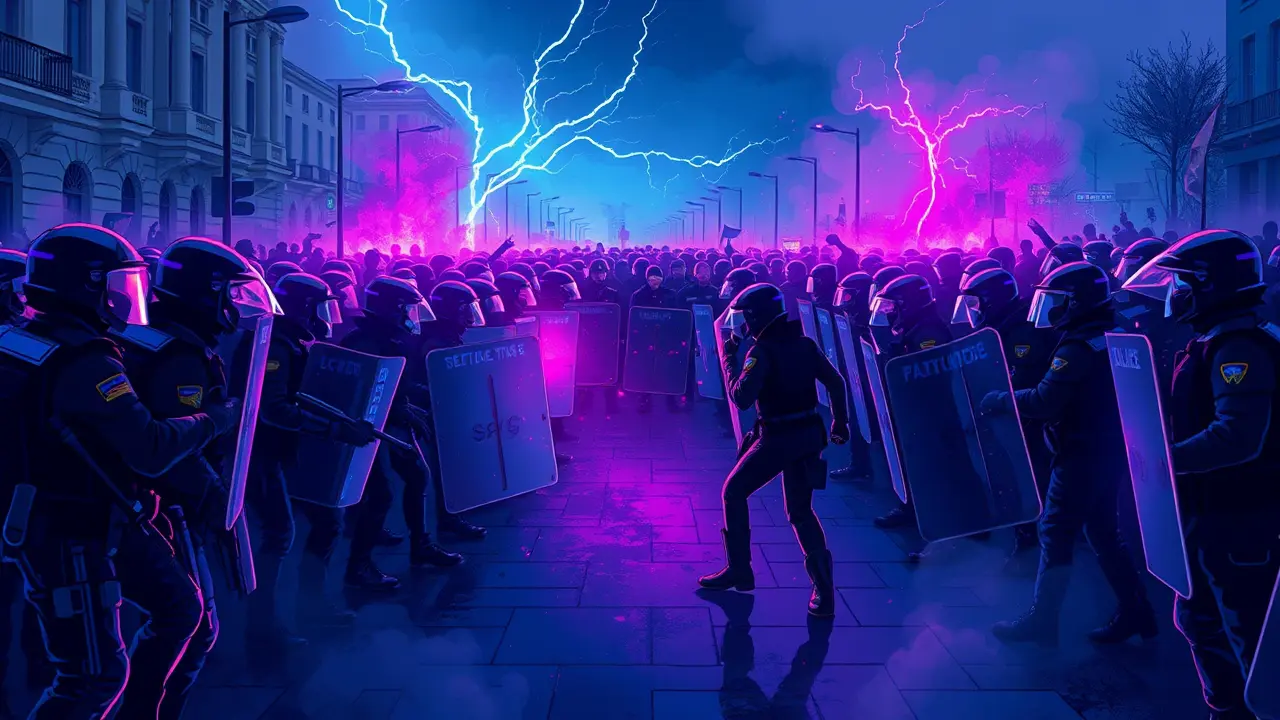
Politicsprotests & movementsMass Demonstrations
Riot Police Separate Rival Protesters in Tense Belgrade.
EM
Emma Wilson
12 hours ago7 min read
The air in central Belgrade crackled with a palpable tension on Sunday, a raw, visceral energy that speaks to a nation teetering on a precipice. Hundreds of riot police, their figures imposing in full tactical gear, formed a human wall—a stark, metallic-blue line dividing a city, and indeed a country, fractured by a year of unyielding political strife.On one side, the voices of opposition, hoarse from months of persistent anti-government protests, shouted their defiance. On the other, loyalists of Serbia’s autocratic President Aleksandar Vucic answered with their own fervent chants, creating a cacophony of nationalistic pride and democratic desperation.This was not a spontaneous outburst; it was the boiling over of a pressure cooker that has been simmering since the controversial elections in December, a year marked by claims of electoral fraud, a violent crackdown on protesters, and an increasingly tightening grip on media freedom by the Vucic administration. Several thousand people faced off across these police cordons, the officers standing rigid in several rows, a fragile barrier against the escalating fury.The scene quickly devolved from a shouting match into a more dangerous physical confrontation, with projectiles—glass bottles and fiery flares—arcing through the smoky air, thrown by rival factions with an intent that transcended mere political disagreement. This explosive standoff did not emerge from a vacuum; it was a direct and almost inevitable consequence of the massive rally that had flooded the streets just a day prior, where tens of thousands of Serbians, from students to pensioners, had gathered in one of the largest displays of dissent against Vucic’s Serbian Progressive Party (SNS).That peaceful, yet resolutely angry, gathering was a clear message to both the government in Belgrade and watching international bodies in Brussels and Washington: the pro-democracy movement, though facing immense pressure, is far from extinguished. The loyalist counter-protest, widely believed to be bolstered by public sector workers and party members bussed in from outside the capital, was a calculated response, an attempt to project a image of popular support and to physically challenge the opposition's claim to the streets.Analysts watching the Balkans are deeply concerned, drawing uneasy parallels to the nationalist fervor and civil conflicts of the 1990s. The use of riot police to separate citizens in the heart of the city is a powerful, chilling symbol of a deep societal rift.For the European Union, which has Serbia as a candidate member, these events present a profound dilemma. How can integration talks proceed with a government accused of steadily eroding democratic norms? The situation is a stark reminder that the path away from authoritarianism is never linear, but is often paved with setbacks, confrontations, and the very real risk of violence.The bottles and flares of today could foreshadow much darker tomorrows if dialogue and de-escalation are not urgently prioritized by all sides. The world watches, holding its breath, as Serbia’s fragile democracy is tested once again on the streets of its own capital.
#Serbia
#Aleksandar Vucic
#protests
#riot police
#political tensions
#Belgrade
#featured
Stay Informed. Act Smarter.
Get weekly highlights, major headlines, and expert insights — then put your knowledge to work in our live prediction markets.
© 2025 Outpoll Service LTD. All rights reserved.